“On the road again. Goin’ places that I’ve never been.
Seein’ things that I may never see again.
And I can’t wait to get on the road again.”
~ Willie Nelson
Introduction
I’ve always loved to travel. As a child, I remember cross-country, camping road trips to see my Dad’s side of the family in Montana. In college, I was lucky enough to spend a semester overseas. Shortly after we got married, my husband and I traveled to the other side of the world for a two-month road trip around New Zealand. When we returned to the USA, we drove 10,000 miles in 10 days, trying to choose our new home. Our family has always been spread across multiple states, so we take numerous road trips each year just to see the people we love the most.
When I developed rheumatoid arthritis, road trips became a lot more challenging. Long hours in the car, nights in strange beds, a life outside of normal routine, can even make road trips a challenge for healthy bodies. Last summer, I was just one month into the GAPS diet when we took a vacation to Florida. I had started to improve, but I was still flaring regularly. The vacation was wonderful, but my memories are interwoven with how painful that trip was for me. Over Christmas, we drove cross-country to see family. That was 6 months into the GAPS diet, and the trip wasn’t painful at all, but the hours in the car left me feeling very stiff, and I remember needing to stop every 1 to 2 hours to get out of the car and move around. I started the Paleo Autoimmune Protocol on January 1st and we hit the road again on my one-year “healing diet anniversary.” I had been on the AIP for 6 months, and guess what? I had no pain at all this time, and almost no stiffness. Traveling was as easy as it used to be, before RA changed my life.
On all three trips, I stayed on my healing diet, bringing some food with me, ordering carefully at hand-picked restaurants, and then grocery shopping/cooking upon arrival. Today, I’m going to show you how I did it. All of the recommendations below fit both the GAPS Diet and the Paleo Autoimmune Protocol.
Planning & Preparation
Each of my road trips was approximately 2000 miles round-trip. We took two days travel to get there, 5-7 days visiting and 2 days travel back. Our plan was to bring enough prepared food with us, that we would only need to eat in a restaurant once each direction. We always had a kitchen available at our destination, either because we were staying with family, or we made sure to reserve lodging with a kitchen.
The first step is to come up with a food list of what you’re going to pack. Grabbing snacks at the gas station or the drive-thru lanes isn’t an option, and you don’t want to be hungry on the road. Here’s my list. Some of the items need to be ordered online, so I buy those a few weeks in advance. I start pre-cooking a few days before we’re scheduled to leave. Some of the items we’ll eat on the road, and some we’ll eat at our destination. We bring two coolers, and eat out of the small one. That way, the big cooler keeps our food well preserved until we reach our destination.
- Homemade Chicken Soup in Mason Jars
- Pre-Cooked Burgers
- Pre-Cooked Chicken
- Canned Tuna/Sardines/Salmon
- Sauerkraut
- Kombucha
- Coconut Oil
- Olive Oil
- Apple Cider Vinegar
- Sea Salt
- Herbamare
- Epic Bison Bacon Cranberry Bars
- Wild Zora Lamb Rosemary Bars
- Fruit
- Chopped Raw Veggies
- Pork Rinds
- Homemade Gummy Candies
- AIP Treats
- Green Tea
- Herbal Tea
- Supplements
- Britta Pitcher
- Water Bottles
- Travel Plates and Utensils
- Travel Mugs
- Microwave-Safe Bowl and Cover
- Small Dressing Container
Rest Areas Are Awesome
If you don’t take advantage of rest areas, you’re missing out. They’re often tucked away from the highway, surrounded by green grass and tall trees. You can eat at the picnic tables, breathe some fresh air, take a walk to stretch out your body, and overall return to your car feeling nourished and healthy for the next leg of your journey. I can’t recommend them highly enough.
There’s also the entertainment of people and pet-watching at rest areas. On this trip, we saw two young girls practicing violin while their mother checked text messages. And then being a cool Mama, she played violin next. On a prior trip, I did some yoga at a rest area that happened to have a prairie dog colony. As I did my poses, they slowly popped out of their holes one by one, and watched me until I finished. You don’t get experiences like that at fast food joints!
Update: In 2017, I started traveling with a Hot Logic Mini, that lets me heat up food while we drive, so we can enjoy hot meals, too.
Restaurants
A lot of us avoid restaurants, because we don’t want to risk a flare of our autoimmune symptoms. But when you’re traveling, you often need to eat at a restaurant at least once or twice. Honestly, I was really afraid the first time I ordered at a restaurant on this trip, because I hadn’t eaten in one since starting the autoimmune protocol. But I took a deep breath, reminded myself I knew what questions to ask, and made peace with being a high-maintenance customer. Here’s my advice:
- Choose a restaurant that’s allergy-friendly. I have a roundup of 100% gluten-free restaurants that are also paleo-friendly. See if there’s one near your travel route.
- By scanning the menu, you know the food groups you need to avoid. Depending on the restaurant, that might be most of the menu. Some choices you can usually get at any restaurant are: (1) grilled/baked/broiled meat and vegetables, or (2) a special-order salad.
- Tell your waiter that you have food allergies. Be sure and use the allergy word. They know what that is, and they take it seriously. In fact, at each restaurant where I ate, either the manager or the chef came to my table, to be sure they understood my needs. How cool is that? There’s no need to go into details on your autoimmune disease and how food can exacerbate symptoms. That’s harder for people to understand.
- Keep it simple. I didn’t list every single food group I can’t have. I simply listed the ingredients that could be hidden in a recipe without my knowledge: gluten, dairy and red pepper spices. I thought the spices would be highly used in restaurants, but not butter, since butter is expensive. I was wrong. The opposite was true. Every restaurant used butter in almost everything and had to cook my meals separately to avoid it, so I’m very glad I asked.
- Be nice. I smiled when I placed my order and said, “I know I’m a high-maintenance customer, but I’m a good tipper.” That always made the waiter smile, and I got excellent service.
- Result? I ate 3 meals in restaurants on this trip, and didn’t flare once.
- Curious what I ordered? (1) Petit Jean State Park Restaurant: Local pastured pork chops with vegetables cooked in lard. (2) Cheddars Restaurant: Broiled steak with steamed broccoli (which I seasoned with olive oil and a spice blend I brought with me.) (3) Whole Foods: I used their salad bar to create a customized meal.
Grocery Shopping Upon Arrival
Hopefully you have lodging with a kitchen. If not, consider traveling with a Crockpot or Instant Pot, to expand your cooking options. You can eat the same types of meals you prepare at home. My only advice is to keep it simple. Here’s a Paleo AIP Grocery List, to help you shop. I eat soup for breakfast (which I bring with me in mason jars.) I like salads for lunch, and simple meat/veggie meals for dinner. If there’s a Whole Foods Market nearby (or something similar), that’s my preferred shopping place. I bring quite a few items with me, so my grocery shopping list is pretty small:
- Mixed Greens
- A variety of vegetables for salads and dinners
- Ground Beef
- Rotisserie Chicken (unseasoned)
- Pork Chops
- Unsweetened Applesauce
- Avocados
- Onions
- Garlic
- Ginger
- Sponge
- Dish Soap
Eating With Others
If you’re visiting with friends and family, you’ll want to let them know in advance that you’ll be preparing your own meals. Our dietary requirements are so complex that very few people feel up to the challenge; we shouldn’t expect it of them. We can have the pleasure of eating at the same table, just different foods.
When we see the powerful effect food has on the body, in can be hard to watch people eating food we think is harming them. Here’s the deal, though. You can quickly drive people crazy if you proselytize. Be a quiet role model; it’s much more powerful. Absolutely share your own journey, and the difference this diet has made in your life. When you sit down at the table, they’ll see what you’re eating, and it won’t look “weird” at all. It’s real food, and we know it’s delicious. If they ask questions, answer them, but don’t try to pressure them to eat like you. When people are ready, they’ll let you know. And honestly? Some people will never be ready.
I’ve been on this diet long enough that I’m not at all tempted by conventional foods. On my most recent trip, I was surrounded by soda-pop, cookies, cereal, ice cream, chips, candy, breads and more. Honestly, those items don’t even look like food to me. However, to make sure I didn’t feel deprived, I had my “treats” with me (listed above on my food list.) I always had nourishing snacks available to me, and I recommend you do, too.
If you are someone who is tempted by conventional foods, you have every right to take care of yourself by making a different plan. Try and negotiate a shared menu with your family, with real food items you all will like. If that’s not an option, take a walk when the temptation gets strong, and stay at a separate lodging, so you have a sanctuary when you need it.
Willie Nelson
Did you notice the Willie Nelson quote at the start of this article? The song lyric fits the topic, because I love to travel, but there’s another reason I chose it. My husband and I used to work for the same company, and part of my job was photographing all employees for their security cards. For fun, once a week, I would morph two photos together and the staff had to guess who they were. After we had handed in our resignations, with plans to hit the road in New Zealand, I chose to morph together a photo of my husband and me:
Doesn’t it look like Willie Nelson? Everyone laughed so hard, when they saw it. The quote at the top of this article brought back the memory. We’ve done a lot of traveling together, and thanks to the power of a healing diet, I’m so grateful that tradition is going to continue. (Forgive the low photo quality. This was almost 20 years ago – digital photography was very new!)
Other Travel Resources

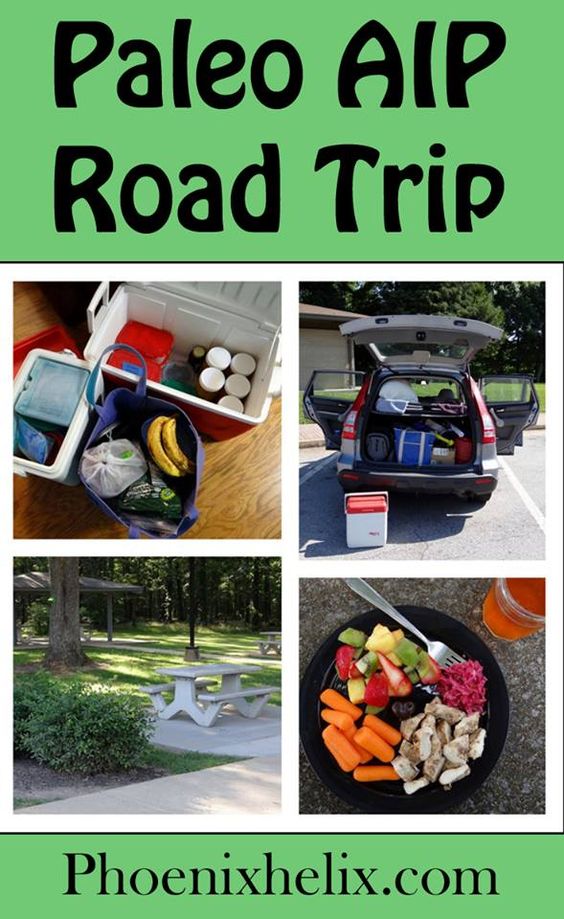
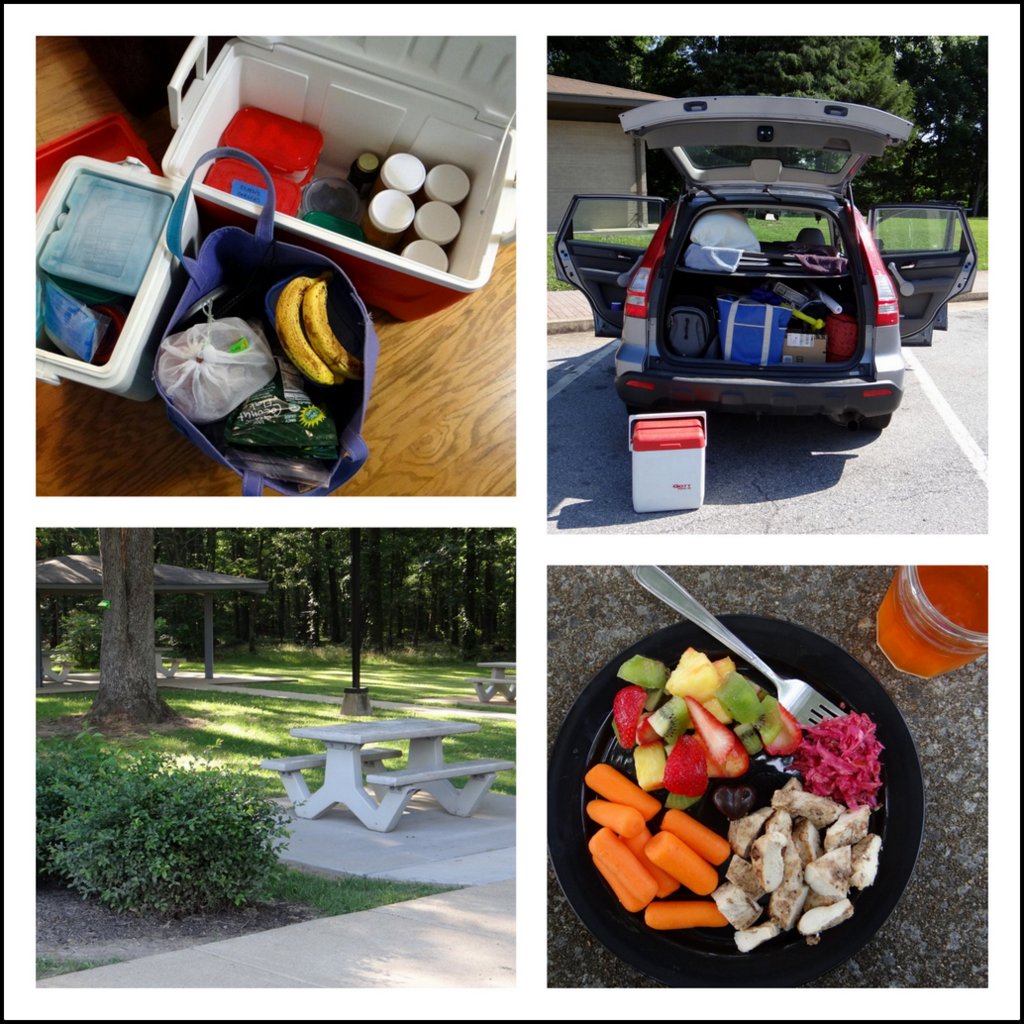
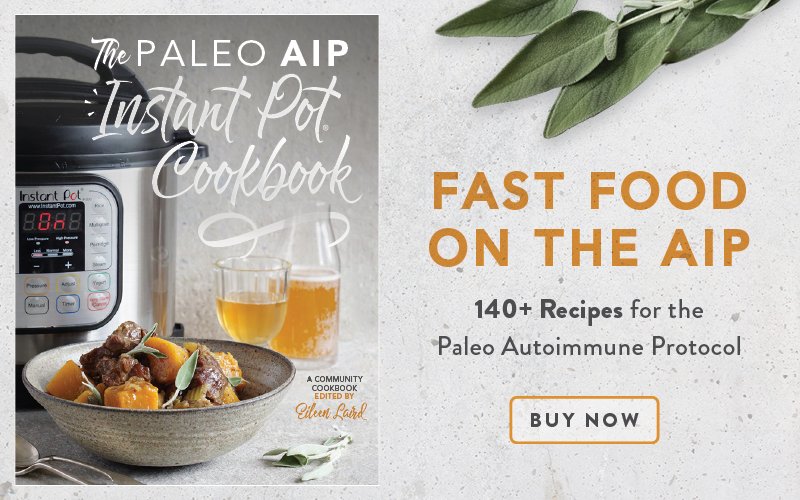

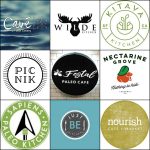



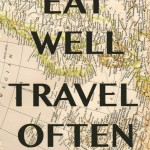


just a simple request…would it be possible to make the links you include in your article open in a new page? That way I can easily continue reading after checking out the link. Thank you so much.
Hi Alison. That’s actually not a simple request, and people have different preferences in this area. I’ve gone with the industry standard, which is to let people choose to open tabs rather than force it. The good news is there’s an easy solution for you: If you like to open links in new tabs, just right-click on the link and you’ll be given that option.
Hi! 🙂
It is hurricane season here on the East Coast of North Carolina. I would love to know your thoughts on disaster preparedness and building an emergency food supply kit. I know the basics. My dilemma is that I have Ulcerative Colitis and do not fare well with raw vegetables or fruits; nor any type of spicy or seeded anything; (which; for example, removes some of the Epic bar choices) and cooking may not be an option if no one around has power. Also, keeping things cold may not be an option either. Oh, I am also in my first month of AIP with some removed allergy and UC restrictions. Should I just do my best with canned veges? I would not think we would be out of power more than two weeks max –that being said… one never knows.
Thank you!
Hi Jenifer. Welcome to the AIP community . This is a great question. I reached out to my blogging buddies and discovered that my friend Mikaela wrote a great article on this topic: AIP Survival Tips. Also, if you follow me on Facebook, I’ll post this question there tomorrow morning, and I expect people will reply with lots more great advice.
Thank you so much! I got a lot out of Mikaela’s article!
Hi Eileen! I tried clicking on the AIP survival tips and it didn’t take me to any survival tip page. Any chance you have advice or a new resource for AIP emergency food supplies?
Hi Jenny. Here’s an article with some good tips: https://aiprecipecollection.com/emergency/
Jenifer, I also got one more tip from a friend with UC who also does better with cooked veggies. She bought a kerosene camp stove, which allows cooking even without electricity and is easy to store until needed.
Ahhh….. It has been so long since I’ve been camping, I totally forgot about using our mini camp stove! We actually used this a couple of years ago when we lost power from a heavy snow and ice storm. Stocking up on isobutane-propane canisters would be a great addition to an emergency kit (as well as a small cooking pot and utensils). Thank you again Eileen! 🙂
Hello, so I would like to try AIP but because of my living situation I don’t have access to a kitchen to prepare/cook things in. I’m pretty much limited to a microwave and a fridge and I’m very limited on funds. Are there any super duper quick, cheap, easy, things I can eat for now? Fast food restaurants/prepared meals are ideal. Thanks.
Hi Justin. I’m sorry, but cooking is an essential part of any healing diet. You really can’t do it otherwise because there are very few AIP selections at restaurants, and hidden ingredients often slip into the food. Also, an important component of the diet is nutrient density – lots of vegetables and homemade broths, etc. Wait until you have access to a kitchen, and then give this diet a try!
so, I re-read my reply Justin, and it was too discouraging. I’m sorry. While you can’t do full AIP without cooking, you can certainly take steps to make healthier food choices overall. Here is a great article on eating Paleo in college. I don’t know if you’re in college, but the lack of kitchen situation is similar: A College Guide to Eating. Just do your best! The fact that you want to make a healthy change is the first step.
Dear Eileen. I will be using a lot of your tips for my road trip, but most of all I wish you good health, better health.You are so generous with your good thoughts that I just wanted to send you some. Hugs and more hugs Sherie
Thank you Sherie!
Thank you a million times for this! I am preparing to go on the paleo autoimmune diet next month. We have a lot of traveling planned for the summer and I am already overwhelmed. What is the difference between AIP and the GAPS diet?
GAPS is similar to regular paleo with one big difference – it restricts dense starches (like sweet potatoes, plantains, arrowroot and tapioca), but allows low-starch root veggies like winter squash and carrots. Through self-experimentation, I found that I have a starch sensitivity. (Eating the dense starches increases inflammation in my body). This isn’t true for everyone; some people thrive on starches. It’s a troubleshooting step down the road if regular AIP doesn’t work for you.
I read this article not long before a five day trip. I was attending a basket weaving convention and celebrating a birthday with family. Risking eating out was not an option. After reading your article on best ways to pack food; I sat down made a meal plan. I was mentally prepared to bring 15 meals and snacks. Following your packing suggestions, I was ready for my 5 day weekend.
Lessons Learned: Cooking anything that is needed takes up resting time. I work a full time job so trying to finalize things before leaving town in addition to needing to cook, pack food, pack clothes etc., and do any last minute shopping in addition to eating dinner, I just had too many things to do.
Fast forward, an emergency trip due to family member illness. I brought my own food on the plane and I grocery shopped the night I arrived. I also stopped by Costco for a couple of organic chickens. I baked chickens so I had baked chicken, chicken salad and chicken soup. I ate out once had a bit of gluten contamination – I only had pain for a few days so I guess it was exposure thru cross-contamination. All other days I was brining my food so I wouldn’t have to risk exposure.
Your article gave me the courage to step up and bring my own, Thank You!
I’m so glad you found this article helpful, Connie. You are now officially an AIP road warrior! Thanks for sharing your tips.
Great ideas here on planning ahead for road trips — that is the way to stay healthy.
Great tips, and, as always, a very thorough post! I had to pack a bag of food for my recent 2 week trip to Greece, too (rice cakes, dried fruit, nuts, rice bars, etc). And lol re: the Willie Nelson fusion photo. And my mom always sings “On the Road Again” when I head out for one of my many numerous trips ;p
Thanks so much for sharing it on Waste Not Want Not Wednesday. I’ve pinned it 🙂
Whenever I go on road trips, my mom and I always stop at the grocery store first, or we stop at a grocery store on the way (HOPEFULLY A Whole Foods is on the way, lol) and we pick up LOTS of paleo friendly foods! I love to get lots of salmon and grilled veggies – that keeps us full for a long long time! 🙂
Is your Mom paleo, too?
This is awesome! I can’t believe I didn’t know about your site sooner – but now that I do, I’m excited to check out your other posts. While my diet isn’t exactly AIP or Paleo, it’s related and often difficult. I’m getting used to restaurants, but I almost always bring food with me to other people’s homes, and travel makes me incredibly nervous. Thanks for the great tips!
The internet is such a big place it’s almost a miracle we can find anything. Welcome!
Excellent point! Still, even online the autoimmune community sometimes feels so small and connected, in a really great way.
Hi Eileen, I loved this post because I do road trips to see family too, and it’s not easy to do on GAPS or Paleo! I read through it all, clicked on every link, and printed out some recipes….all wonderful tips and tricks for travel. I’ve been on GAPS for 6 months with RA, and have seen good results, but not full recovery yet. I have had to cheat while traveling, eating out, etc. so it could have slowed things down somewhat.
Another thing that has helped my RA symptoms quite a bit is using liposomal encapsulated vitamin c that I make at home with an ultrasonic cleaning machine. It is similar, and even more effective to the IV Vitamin C therapy used for cancer, TB, infections, pancreatitis, etc. Much cheaper to do at home on your own too! Just wanted to throw that in there for anyone needing small miracles….
I’ve really only had the RA symptoms for about 8-9 months, so was hoping for a faster and more complete remission using food. Anyway, I was interested in knowing more about your experience on the Paleo AIP diet, how fast you saw results, and any foods you’ve seen you could not bring back after 30 days. I may try it, but eliminating even more foods is daunting to me, especially the eggs for breakfast and nuts for snacks. I get pastured eggs, so I doubt I have problems there and might not try eliminating them at first. Breakfast without eggs or some kind of “bread” would be hard for me.
Hi Donna. I plan on writing up an article on my experience with the AIP in another month. I’m not completely finished with the reintroduction phase yet (it’s a slow process). I’ll save the details for that article, but I will say that I have been able to reintroduce a couple of foods, but not all of them, and removing the intolerant ones from my diet has made a big difference in how I feel. Did you see my article on egg-free breakfasts? I have 10 recipes listed that make that transition easier. I have come to prefer having soup in the morning, myself. It’s way more satiating than my prior breakfasts ever were. As for nuts, those were tough to give up because they’re so delicious, but you just develop new food habits. Instead of nuts as snacks, I eat coconut chips or avocados, and again, they’re more satiating than nuts ever were. So, I recommend giving the AIP a try, when you’re ready. It’s OK to wait a while longer, if it feels too intimidating now. Move at a pace that works best for you emotionally as well as physically. They both matter!
Thank you for those egg-free breakfast ideas…I printed out a few I thought I might try. I actually have done something similar to one of them using pumpkin instead of squash. VERY good and oatmeal-like enough to eat again! I think I might give Paleo AIP a try after our next road trip is over this summer. It might be the final step I need in order to determine any food intolerances I might have. Thanks for such in-depth, well thought out blog posts….yours is one of the few I read EVERYTIME!!
Thanks for the compliment, Donna. It made my day! 🙂